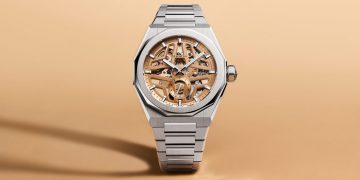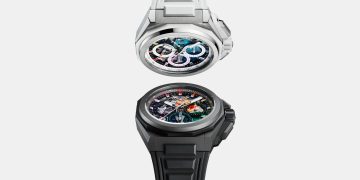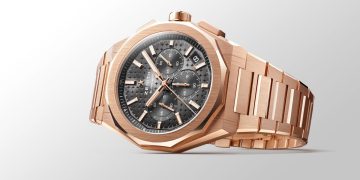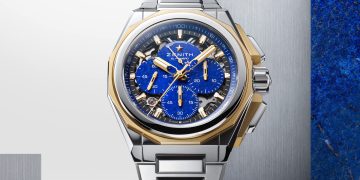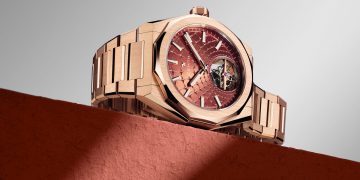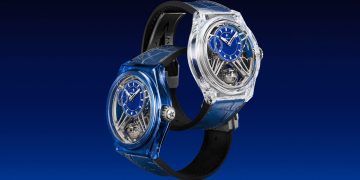Source: Images and content by Vacheron Constantin
http://content.presspage.com/uploads/1999/5fb793c2-9ecc-44bb-ac6e-93fe0bd7103c/500_vac-pr-lescollectionneurs-12342-certificat.jpg?10000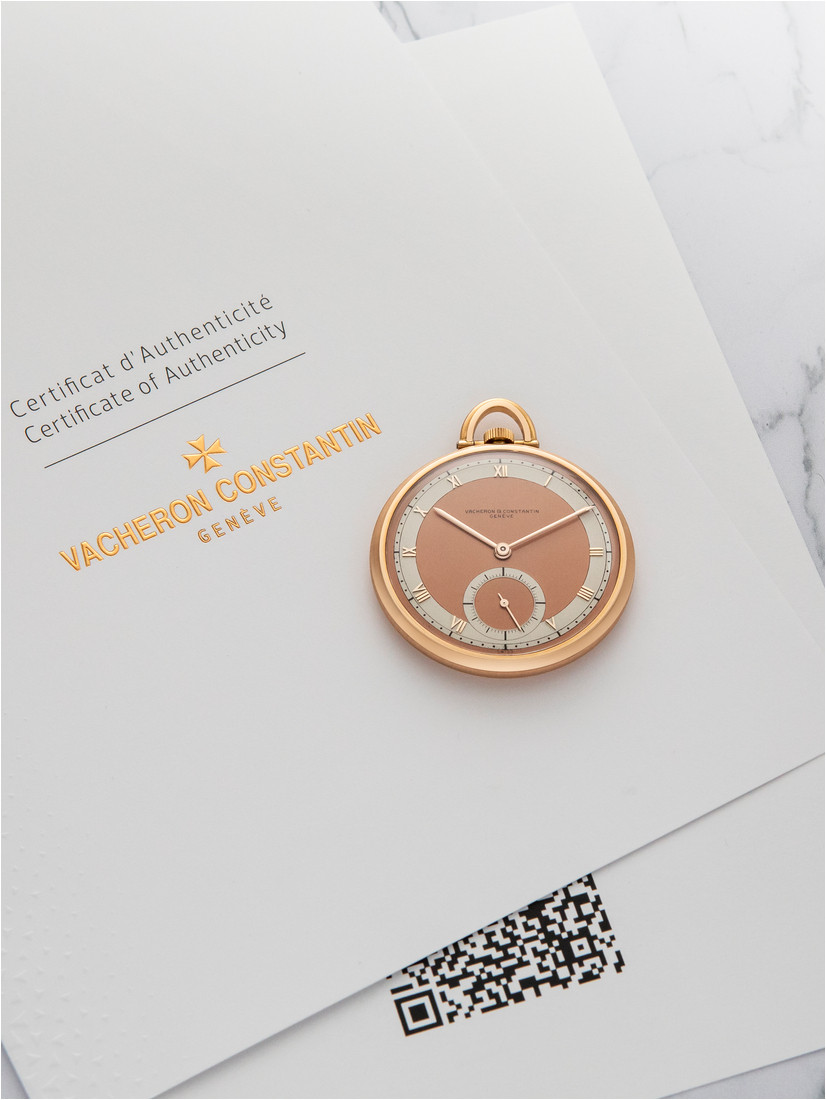
- Les Collectionneurs are a selection of vintage watches carefully sourced, restored
and authenticated by the Maison’s Heritage experts. - It is now possible to view the selection on the Vacheron Constantin website, book an appointment, view the location of the timepices and register an interest.
- The new selections are presented in Bangkok, Thailand – 1 – 30 December 2023 at Vacheron Constantin Siam Paragon boutique
- Models “hunted down” by Vacheron Constantin’s experts, then restored and delivered with a certificate of authenticity and a two-year guarantee.
Chosen with patience and talent by the Maison’s heritage department specialists, vintage watches covering the entire 20th century are now part of the aptly named
Les Collectionneurs collection. The latter continues to evolve over time and is regularly offered for sale to brand aficionados at dedicated events organised in Vacheron Constantin boutiques around the world. Les Collectionneurs models all come with a certificate of authenticity and a two-year guarantee – an offer unmatched in the watchmaking world.
Since 2008, Vacheron Constantin has made the world of vintage watchmaking its speciality through its Les Collectionneurs range which provides a window onto the 20th century world of the Maison. Consisting of constantly renewed selections of vintage timepieces, this collection can now be found on the Maison’s website. Interested customers can discover all the special features of the new watches tracked down by Vacheron Constantin’s experts and enquire about the details surrounding this particular offer and its presentation. It is also possible for the visitor to request an interest in other vintage timepieces that the Maison Experts can advise on. Although displayed online, these vintage models are reserved for purchase in Vacheron Constantin boutiques. This presents an opportunity for collectors to show their interest by registering on the site and setting a time and date in the location of their choice with a view to forthcoming boutique appointments in the United States, Shanghai and Dubai.
Historical and technical expertise
The Maison’s Heritage experts are responsible for sourcing these watches from their network. Serving as a reference, Vacheron Constantin’s exceptional archives span three
centuries of history starting from the first document recorded in 1711, the apprenticeship contract signed by Jean-Marc Vacheron. These some 420 linear metres of sales and
production registers, correspondence and other iconographic documents are complemented by 1,600 horological items from the 18th century to the present day. This documentary wealth enables the Maison’s experts to guarantee the traceability of all timepieces that have left its workshops since 1775. With each acquisition of a vintage timepiece, the first task thus consists in recording the serial numbers of the case and movement, which are kept in the Vacheron Constantin archives for authentication purposes.
After that, the technical diagnosis establishes whether the model requires simple cleaning, repair for malfunction or, more fundamentally, the replacement or supply of faulty or missing components. A corroded dial, missing hands, blunt-toothed gears or a pitted barrel spring are all challenges to be overcome. Within the Manufacture’s three workshops that handle these models according to their age, watchmakers can restore any watch produced by the Maison since its origins. The consistent objective is to intervene while respecting the work of previous watchmakers so as not to adulterate the timepiece. To accomplish these tasks, they have stocks of period components and a fleet of historical machines at their disposal if they need to recreate such or such a movement component. Any major operation performed on a timepiece is comprehensively documented in a booklet given to the client, so that the various stages of restoration can be fully explained.
Once these historical stages of authentication and maintenance techniques have been completed, the watches are delivered with a certificate of authenticity, a two-year warranty
and a blockchain-based Digital Passport to enable trust and transparency for the future lifetime of the timepiece.
——
Questions for Christian Selmoni, Style & Heritage Director
Is this a new step forward with Les Collectionneurs?
Vacheron Constantin has gained enough experience since 2008 with its Les Collectionneurs selections to ‘institutionalise’ this range. By that, we mean that the Maison has now made this a collection in its own right, which appears on its website in the same way as its other collections. Vacheron Constantin began researching and restoring antique timepieces some 15 years ago, with the aim of meeting the needs expressed by a clientele of collectors. Considering that Vacheron Constantin is a watch Manufacture of and for connoisseurs, it seemed judicious to explore this vintage universe, especially since it has all the skills required, both historically and technically, to present a serious, thoughtful and attractive offering. For a long time, the events organised to present these products took the form of almost confidential customer meetings. This is definitely no longer the case
today, as interest in this type of timepiece is growing, emanating from ever-increasing numbers of passionate enthusiasts. Within this context, the Maison has decided to take things a step further. These timepieces and their characteristics are now online, as are details of the boutiques where they are offered for sale, with the option of registering
and making an appointment with the Maison’s experts.
What are the main challenges you face when selecting models?
First and foremost, we have to find models that are neither too rare nor too common. They must also not be too damaged, too recent nor too old. Very rare pieces are destined for auctions that exceed the price ranges that the Maison offers with Les Collectionneurs. The same applies if the restoration is too extensive and hence too expensive. Items that are too old are aimed primarily at specialists, while those that are too recent fall outside the realm of vintage. On this basis, it’s a question of finding timepieces that all have a specific characteristic liable to make them sufficiently attractive to collectors. This may take the form of an original display, an exceptional calibre, an anniversary piece, artistic crafts models or Grand Complications. Any combination can work, provided of course that you know how to assess its relevance from a historical perspective. In theory, this may seem a relatively easy task. In practice, it is nothing of the sort. That’s why the Maison’s Heritage experts have to be highly skilled in this area and have the right networks to source these timepieces. Once acquired, these watches are taken care of according to a well-established process within the Manufacture.
What are the distinctive features of the ranges you’re offering this autumn?
The rich and varied selections include not only wristwatches but also pocket watches. They encompass both ultra-thin or complicated calibres and original displays. Collectors will thus be able to find highly sought-after 1940s chronographs, as well as artistic craft watches, Grand Complication timepieces and three-hand models equipped with outstanding movements. A closer look at the distinctive features of these selections highlights the wealth of Vacheron Constantin’s production through the ages in terms of both men’s and ladies’ watches, bearing in mind that the boundary between the two is now increasingly blurred. In the field of mechanical watchmaking, just as in that of styles and trends, Vacheron Constantin has always been in the creative vanguard.
Watch Selection, Thailand
1 – Perpetual calendar chronograph watch in pink gold with moon phases, matt varnished white dial (Ref. 49005 – 1999)
The watch bearing Reference 49005 is an emblematic achievement by Vacheron Constantin, as much for the technical sophistication of its movement as for the aesthetically masterful layout of the complications. The model launched in 1992 remained in production until the turn of the century, when it was replaced by Reference 47112 in the Malte collection providing the same functions. During this period, the Maison produced versions in pink gold and platinum. This model, with its pink gold gadrooned case measuring 38 mm in diameter and 12 mm thick, was Vacheron Constantin’s first to combine the chronograph and perpetual calendar functions with moon phases and small seconds, powered by self-winding Calibre 1136QP measuring just 7.10 mm thick. Among watches that feature both chronograph and perpetual calendar functions, Vacheron Constantin’s Reference 49005 stands out for the perfect legibility of its functions, enhanced by its sophisticated design.
2 – “Prestige de la France” asymmetrical watch in yellow gold, black dial (Ref. 2091 – 1972)
In 1972, Vacheron Constantin was awarded the “Prestige de la France” prize in recognition of the atypical design of a watch that would give rise to an iconic Vacheron Constantin collection. Initially called “Trapèze”, it is characterised by the isosceles trapezoid shape of its curvex case that was unprecedented in watchmaking as well as being perfectly ergonomic. A symbol of the 1970s and representing a break with classic watchmaking codes, this model reflects a quest for simplicity, expressed through new geometrical codes and meticulous attention to detail. The minutes-track-free dial punctuated only by slim gold applied hour-markers and Roman numerals accentuates the pared-down look of this model, while the harmonious integration of the strap dispenses with lugs and the crown is adorned with a cabochon-cut. This 6 mm-thick “Trapèze” model with its ultra-thin oval manual-winding Calibre 1050 gracefully asserts its futuristic style.
3 – Chronomètre Royal watch in yellow gold, silver-toned satin-brushed dial with date (Ref. 6694 – 1967)
The Chronomètre Royal range began in 1907 when Vacheron Constantin – renowned for the quality of its chronometry – unveiled high-precision models specially developed for the hot, humid climates of Latin America. From 1953 onwards, the same qualities of robustness, resistance and precision were found in the Chronomètre Royal wristwatchesNicknamed ‘Batman’ because of the highly recognisable shape of its lugs, this Reference 6694 is powered by Calibre K1072/1 with simple calendar, Vacheron Constantin’s first self-winding chronometer movement. Introduced in 1959, it remained in production until the range was discontinued in the late 1970s. Even today, this movement is considered a masterpiece of its kind, bearing the Hallmark of Geneva and featuring a variable-inertia balance and an index with movable balance-spring stud-holder enabling fine adjustment of the mechanism. The finishing is equally meticulous, notably including an 18K gold circular-segment rotor adorned with a dainty barleycorn guilloché
4- Watch in yellow gold, silver-toned dial (Ref. 4600 – 1950)
Watchmaking classicism is a subtle blend of harmonious proportions, refined aesthetics, sound ergonomics and cutting-edge mechanics. The result is a sense of natural elegance evoked by this 1950 watch, perfectly adapted to the wrist and housing an impeccable three-hand Calibre 453 also driving a small seconds display at 6 o’clock.
Measuring 28.8 mm in diameter and 4 mm thick, this manual-winding movement powering the model enables the gracefully curved design of the 36 mm case. Available since the early 1940s, Calibre 453 is one of the most reliable watch movements developed in the mid-20th century. Considered a benchmark by experts, it remained in production for some 30 years and was also used as the base movement for Vacheron Constantin’s famous 485 and 496 triple-calendar references. This model with its silver-toned dial punctuated by applied gold Roman numerals and featuring an external minutes track captivates with its discreet charm and perfect functionality.
5 – Watch in pink gold, champagne-toned dial (Ref. 4165 – 1942)
This 33 mm-diameter pink gold timepiece with champagne-toned dial exudes all the charm of a classic watch suited to both men’s and women’s wrists, in keeping with the wristwatch norms prevailing during the first half of the 20th century. With its slender lugs, minutes track punctuated by applied gold hour-markers and Arabic numerals, along with likewise gold baton-type hands, this model meets the need for functionality in a refined style distinguished by monochrome tones. To equip it with a reliable and accurate movement, Vacheron Constantin opted for Calibre 453, widely regarded as a benchmark among manual-winding movements since its appearance in the early 1940s. This rhodium-plated brass movement powering an eminently classical timepiece features a circular-grained mainplate and bridges adorned with a Côtes de Genève motif. It is equipped with
a terminal-curve balance-spring and swan’s neck index enabling extremely accurate adjustment of the mechanism.
6- Pocket watch in pink gold, two-tone copper- and silver-toned dial (Ref. 4118 – 1940)
This elegant 45 mm-diameter pink gold pocket watch radiates a design clearly influenced by the Art Deco style. Produced in the early 1940s, it features a domed case with clean, pure lines, accentuated by the slender bezel at 12 o’clock. The minimalist dial is distinguished by its two-tone configuration, which contributes to the perfect legibility of the hours, minutes and small seconds at 6 o’clock. The minutes track bearing applied gold Roman numerals and the seconds scale stand out in contrast with their silver-toned circles against a coppery background. The gold pointed baton-type hands are driven by manual-winding Calibre RA 17”’ 9/12, thus ensuring both precision and robustness. Adorned with circular-grained decoration on the mainplate and a Côtes de Genève pattern on the bridges, this movement is equipped with a bimetallic balance held by an index-bridge
enabling fine adjustment of the length of the flat balance-spring and thus guaranteeing precision.
7 – Watch in yellow gold, opaline silver-toned dial (Ref. 4826 – 1953)
This watch with its understated design and round case is typical of 1950s watchmaking elegance, complete with a few stylistic subtleties that set it apart. Its 38 mm diameter makes it an “imposing” watch for an era when men’s watches generally came in sizes ranging from 32 to 35 mm. The stepped lugs welded over the bezel endow the model with an assertive character. The dial with its frosted minutes track and gold baton-type hands is finished in porcelain with applied gold hour-markers and Arabic numerals. The final touch of originality is the discreet applique at 6 o’clock, in the form of a gold dot “bearing” the small seconds. This watch is powered by Calibre 453, a benchmark among mid-20th century manual-winding movements and renowned for its reliability and precision.
8 – Chronomètre Royal watch in steel, silver-toned dial with date (Ref. 42001– 1978)
Introduced in the early 1970s, this self-winding Chronomètre Royal model marked a transition for Vacheron Constantin. The elegance of its chronometers, perfectly symbolised by the legendary 6694 ‘Batman’ reference, evolved towards sportier models with integrated metal bracelets. For much of the 20th century, Vacheron Constantin reserved the term “Chronomètre Royal” for its most emblematic watches. Reference 42001 – issued in an individually numbered run – was one of them, available from the outset in yellow gold or
steel, a metal that was now making its appearance in this category of Vacheron Constantin chronometers. This chronometer-certified watch with its special-shaped case reflects the free-spirited style of the 1970s and is powered by self-winding Calibre 1096, notably driving instantaneous date and stop seconds displays.

